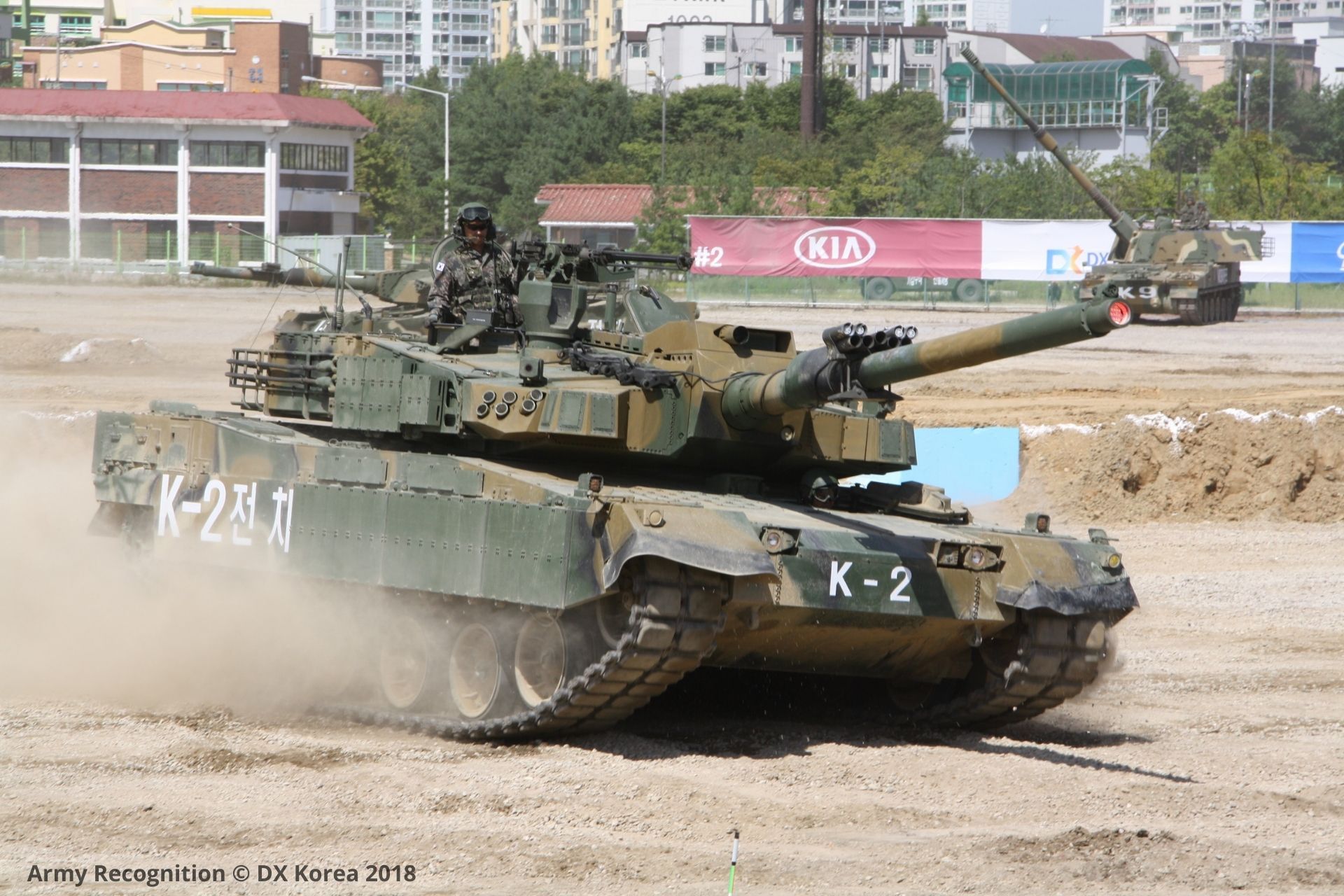Breaking News
Focus: The Armor of the K2 Black Panther, a Double-Edged Technology.
The K2 Black Panther, a main battle tank from South Korea's new generation, is a technological marvel that highlights the advancement of armor technology. Equipped with a sophisticated composite protection system, this tank combines innovation and power, yet it presents certain challenges, particularly in terms of turret protection against modern anti-tank weapons.
Follow Army Recognition on Google News at this link

The K2 Black Panther is armed with a 120mm smoothbore gun capable of firing kinetic energy penetrators and explosive charges (Picture source: ArmyRecognition)
The K2 Black Panther features a sophisticated composite armor system that combines silicon carbide and aluminum oxide ceramic modules. This design provides frontal protection equivalent to 700mm of rolled homogeneous armor (RHA) against armor-piercing fin-stabilized discarding sabot (APFSDS) projectiles and 1,000mm against high-explosive anti-tank (HEAT) rounds. However, the turret and hull sides, protected only by 50mm of RHA, require additional modular explosive reactive armor (ERA) blocks to enhance their resilience.
The turret’s composite armor, although only 850mm thick, effectively withstands APFSDS and HEAT munitions. This has been confirmed through rigorous testing using the K279 tungsten alloy projectile, capable of penetrating 700mm of steel from 2 kilometers away when fired from the K2's 120mm L/55 CN08 smoothbore gun.
While other main battle tanks like the American M1 Abrams and the German Leopard 2 also utilize advanced composite armor, the K2 is distinguished by its modular approach and ability to integrate cutting-edge armor technologies specifically tailored to contemporary threats.
Despite these advantages, the K2's armor has limitations, particularly in protecting the turret and hull sides. Even with ERA blocks, these areas may be vulnerable to modern anti-tank weapons, necessitating operational strategies that consider potential attack angles and leverage the tank's mobility to minimize risks.

Even with ERA blocks, K2's turret and hull sides may be vulnerable to modern anti-tank weapons, necessitating operational strategies considering potential attack angles and leveraging the tank's mobility to minimize risks. (Picture source: ArmyRecognition)
The K2 Black Panther, designed and manufactured by Hyundai Rotem, began production in 2008, with the first units entering service in the South Korean army in 2014. It was developed to replace older tank models in the South Korean arsenal, offering enhanced capabilities and protection.
Currently, about 260 units are in service, with plans to produce around 400 tanks, including potential exports and additional units.
The tank features significant technological advancements, including an advanced fire control system that can identify and engage targets at long distances with high precision. It is armed with a 120mm smoothbore gun capable of firing kinetic energy penetrators and explosive charges. Additionally, the K2 incorporates network-centric warfare technologies, enhancing its operational capabilities in coordinated combat scenarios.
Several countries have shown interest in the K2 Black Panther. For example, Poland signed a deal in 2021 with South Korea for the acquisition of several hundred tanks, with licensed production planned in Poland. Norway has considered the K2 for its main battle tank replacement program, although a final decision has not been made. Turkey, which is developing its own Altay tank, has explored technological collaborations with South Korea to incorporate features of the K2 into its project.
Egypt has also shown interest in the K2 to modernize its armored fleet by replacing older models. Recently, Romania has shown interest in the K2 Black Panther as part of its military modernization efforts, with demonstrations conducted and negotiations ongoing.
These expressions of interest from various countries highlight the K2 Black Panther's appeal and potential in the international armored vehicle market, particularly in Eastern Europe, which appears to be a key market for Hyundai Rotem and South Korea more broadly.


























